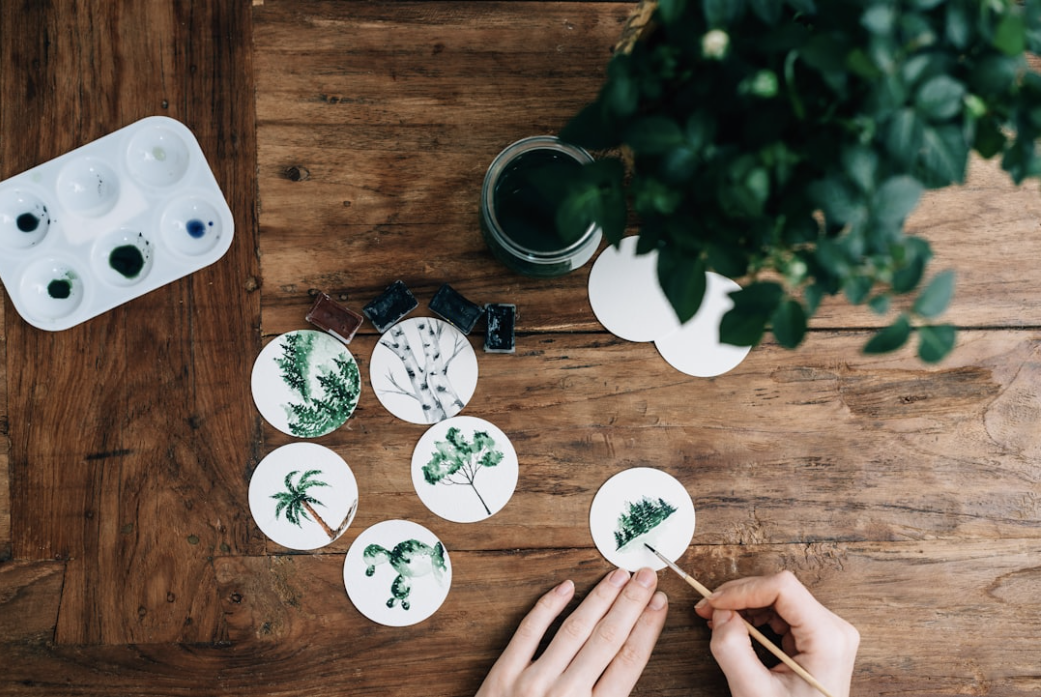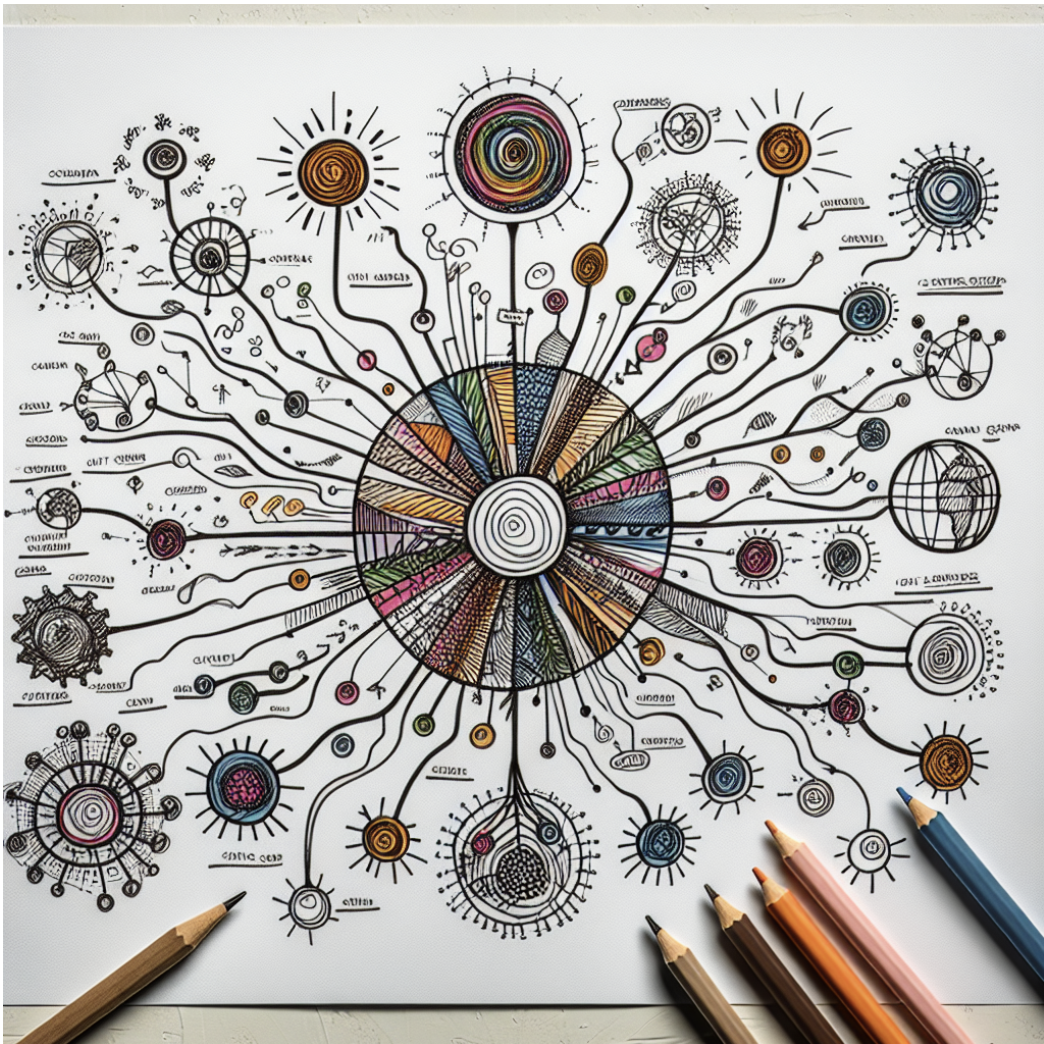Boosting Creativity: Strategies for Everyday Innovation
Creativity isn't just for artists and inventors. It's a valuable skill that everyone can use to solve problems, generate new ideas, and make everyday life more interesting. Whether you're a small business owner, a startup founder, or a marketing manager, enhancing your creative mindset can lead to better solutions and more innovative approaches in your work and personal life. In this article, we'll explore effective strategies to boost your creativity and inspire everyday innovation.
Understanding the Creative Mindset
A creative mindset is the belief that creativity can be developed and improved with practice. It's about being open to new experiences, embracing challenges, and viewing failures as opportunities to learn. People with a creative mindset are more likely to take risks, think outside the box, and come up with innovative solutions.
Embracing Curiosity
Curiosity is the foundation of creativity. When you're curious, you ask questions, seek out new information, and explore different perspectives. This can lead to unexpected insights and new ideas. To cultivate curiosity, make it a habit to:
Ask "why" and "what if" questions. Delve deeper into topics by questioning the status quo and challenging existing assumptions. This can lead to a richer understanding and novel viewpoints.
Explore topics outside your usual interests. By stepping outside your comfort zone, you can uncover connections between seemingly unrelated areas, sparking creativity.
Engage in conversations with people who have different viewpoints. This not only broadens your perspective but also helps you appreciate diverse ideas and approaches.
Embracing Ambiguity
Being comfortable with ambiguity is a crucial aspect of a creative mindset. When you accept uncertainty, you open yourself up to endless possibilities. Embracing ambiguity involves:
Accepting that not all questions have immediate answers. This allows you to explore multiple pathways and potential solutions without the pressure of finding the "right" answer.
Viewing challenges as opportunities for growth. Each obstacle presents a chance to innovate and experiment with new ideas.
Cultivating patience in the face of complexity. Often, creative breakthroughs require time and perseverance to manifest.
Nurturing a Growth Mindset
A growth mindset believes that abilities and intelligence can develop over time. This mindset fuels creativity by:
Encouraging continuous learning and self-improvement. By consistently seeking knowledge, you keep your mind active and receptive to new ideas.
Embracing failure as a stepping stone to success. Each setback is a learning opportunity that guides you toward more effective solutions.
Celebrating small victories. Acknowledging progress, no matter how minor, can motivate further creative exploration.
Techniques to Enhance Creativity
There are various techniques you can use to enhance your creativity. These methods can help you break free from routine thinking patterns and generate fresh ideas.
Brainstorming
Brainstorming is a classic technique for generating ideas. The key is to create a judgment-free environment where all ideas are welcome, no matter how wild or impractical they may seem. Here's how to do it:
Gather a group of people with diverse perspectives. Diversity in thought enriches the brainstorming process by introducing varied experiences and insights.
Define the problem or topic clearly. A well-defined problem provides focus and direction, ensuring that ideas generated are relevant and actionable.
Encourage everyone to share their ideas without criticism. Creating a safe space for free expression is essential to unlocking the full potential of group creativity.
Write down all ideas, no matter how unusual. Documentation ensures that no idea is lost and allows for later review and refinement.
Review and refine the ideas later. Post-brainstorming analysis can help identify viable ideas and develop them into practical solutions.
Mind Mapping
Mind mapping is a visual technique that helps you organize and connect ideas. It's particularly useful for exploring complex topics or generating ideas for a project. To create a mind map:
Write the main topic or problem in the center of a page. This central focus serves as a starting point for branching out into related ideas.
Draw branches from the central idea, each representing a related subtopic or idea. This structure visually represents the relationships and hierarchies among concepts.
Add further branches to explore each subtopic in more detail. Expanding on subtopics helps uncover deeper insights and connections.
Use colors, images, and symbols to make the map more engaging and memorable. Visual elements enhance recall and stimulate further creativity.
SCAMPER Technique
The SCAMPER technique is a creative thinking tool that encourages you to explore different ways to improve or modify an existing idea or product. SCAMPER stands for:
Substitute: What can you replace or change? This can lead to innovative alternatives that fulfill the same function.
Combine: What can you combine to create something new? Merging ideas or elements can result in unexpected innovations.
Adapt: How can you adapt something for a different use? Repurposing existing concepts can lead to novel applications.
Modify: How can you change the size, shape, or function? Tweaking attributes can enhance functionality or appeal.
Put to another use: How can you use it in a new way? Exploring alternative uses can reveal untapped potential.
Eliminate: What can you remove or simplify? Simplification can lead to more efficient and user-friendly solutions.
Rearrange: How can you reorganize or reverse it? Altering structure can provide new perspectives and insights.
Random Word Association
Random word association is a fun technique that can help you break free from conventional thinking patterns. Here's how it works:
Choose a random word from a dictionary or a list of words. This word serves as a catalyst for generating new ideas.
Write down any ideas or associations that come to mind when you think of that word. This free-association process encourages spontaneous and creative thinking.
Apply these ideas to your problem or topic to generate new perspectives. Incorporating seemingly unrelated concepts can lead to innovative solutions.
Role-Playing
Role-playing allows you to step into different perspectives and explore ideas from new angles. It involves:
Assuming different roles or personas. This exercise can reveal diverse viewpoints and inspire creative solutions.
Acting out scenarios related to your problem or topic. This immersive approach can uncover insights that traditional methods might overlook.
Encouraging empathy and understanding. Role-playing fosters a deeper connection with your audience or users, enhancing creativity.
Finding Artistic Inspiration
Inspiration can come from many sources, and finding what sparks your creativity is crucial. Here are some ways to find artistic inspiration:
Nature and Surroundings
Nature is a powerful source of inspiration. The sights, sounds, and smells of the natural world can stimulate your senses and spark new ideas. Spend time outdoors, whether it's a walk in the park, a hike in the mountains, or simply sitting in your garden. Observe the details and let your mind wander.
Art and Culture
Engaging with different forms of art and culture can also boost your creativity. Visit museums, galleries, theaters, and concerts to experience various artistic expressions. Read books, watch films, and listen to music from different genres and cultures. These experiences can provide new perspectives and ideas.
Creative Communities
Surrounding yourself with other creative individuals can inspire and motivate you. Join clubs, attend workshops, or participate in online forums related to your interests. Collaborating with others can lead to new ideas and insights that you might not have discovered on your own.
Technology and Innovation
The digital world offers endless opportunities for creative inspiration. Explore:
Online platforms showcasing innovative designs and projects. Websites like Behance and Dribbble can introduce you to cutting-edge creativity.
Virtual reality and augmented reality experiences. These technologies offer immersive environments that can spark new ideas and perspectives.
Interactive digital art. Engaging with interactive media can provide a dynamic and participatory form of inspiration.
Personal Reflection
Reflecting on your own experiences and emotions can be a profound source of creativity. Consider:
Journaling about personal experiences and insights. Writing can help you process thoughts and uncover hidden connections.
Meditating to clear your mind and focus on the present. A calm and centered mind is often more receptive to creative ideas.
Engaging in introspective activities like yoga or tai chi. These practices can enhance self-awareness and inspire new thoughts.
Building Creative Habits
Developing a routine that supports your creativity can help you consistently generate new ideas and solutions. Here are some habits to consider:
Set Aside Time for Creativity
Make creativity a priority by setting aside dedicated time for it. This could be a daily, weekly, or monthly practice, depending on your schedule. Use this time to brainstorm, experiment with new techniques, or work on creative projects.
Keep a Journal
A creative journal is a valuable tool for capturing your thoughts, ideas, and inspirations. Write down anything that sparks your interest or curiosity, no matter how small. This can be a source of inspiration when you're feeling stuck or need new ideas.
Practice Mindfulness
Mindfulness practices, such as meditation and deep breathing, can help you clear your mind and focus on the present moment. This can create mental space for new ideas to emerge and improve your overall well-being.
Encourage Playfulness
Playfulness is a key ingredient in fostering creativity. Embrace:
Spontaneity in your daily activities. Allow yourself to be impulsive and explore ideas without constraints.
Humor as a tool for relaxation and inspiration. Laughter can lighten the mind and open pathways for creative thinking.
Games and puzzles to stimulate your brain. Engaging in playful activities can enhance problem-solving skills and spark innovation.
Seek Feedback and Iteration
Feedback is essential for refining creative ideas. Consider:
Sharing your work with trusted peers or mentors. External perspectives can offer valuable insights and improvements.
Embracing constructive criticism as a growth opportunity. Feedback helps identify areas for enhancement and encourages further exploration.
Iterating on your ideas based on feedback. Continuous refinement leads to more polished and innovative outcomes.
Balance Structure and Flexibility
Finding a balance between structure and flexibility is crucial for sustained creativity. Aim to:
Establish routines that support creative work. Consistency provides a foundation for regular practice and exploration.
Allow room for spontaneous creativity. Flexibility encourages you to seize unexpected opportunities and insights.
Adapt your creative practices to suit changing needs. Being adaptable ensures that your creative processes remain effective and relevant.
Conclusion
Boosting your creativity and fostering everyday innovation is a journey that requires curiosity, openness, and practice. By embracing a creative mindset, using various techniques, finding inspiration in your surroundings, and building supportive habits, you can enhance your ability to think creatively and generate innovative solutions. Remember, creativity is a skill that can be developed, so keep exploring, experimenting, and challenging yourself to think outside the box. By doing so, you'll discover new possibilities and drive meaningful change in both your personal and professional life.


